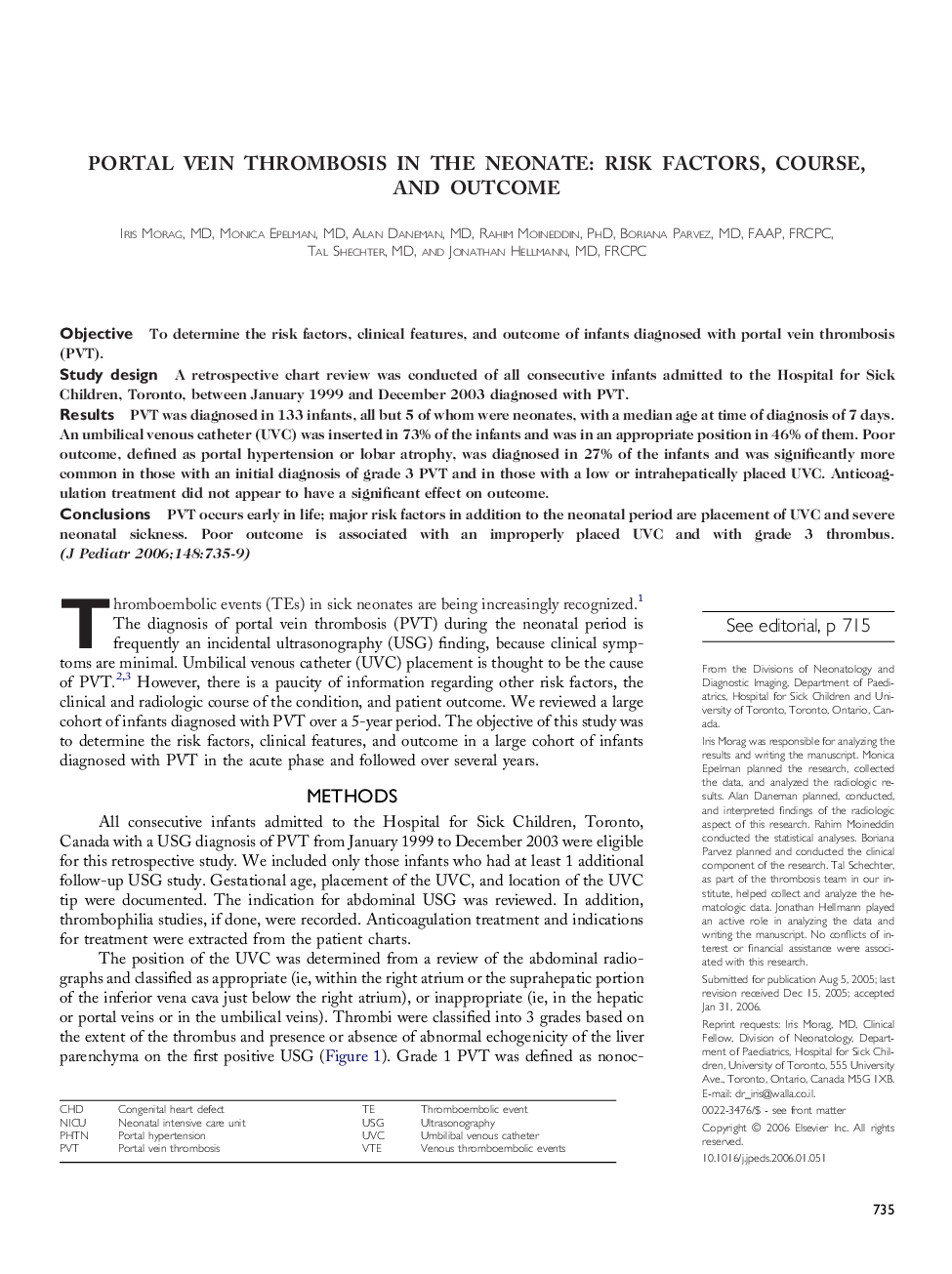| Article ID | Journal | Published Year | Pages | File Type |
|---|---|---|---|---|
| 4169418 | The Journal of Pediatrics | 2006 | 5 Pages |
ObjectiveTo determine the risk factors, clinical features, and outcome of infants diagnosed with portal vein thrombosis (PVT).Study designA retrospective chart review was conducted of all consecutive infants admitted to the Hospital for Sick Children, Toronto, between January 1999 and December 2003 diagnosed with PVT.ResultsPVT was diagnosed in 133 infants, all but 5 of whom were neonates, with a median age at time of diagnosis of 7 days. An umbilical venous catheter (UVC) was inserted in 73% of the infants and was in an appropriate position in 46% of them. Poor outcome, defined as portal hypertension or lobar atrophy, was diagnosed in 27% of the infants and was significantly more common in those with an initial diagnosis of grade 3 PVT and in those with a low or intrahepatically placed UVC. Anticoagulation treatment did not appear to have a significant effect on outcome.ConclusionsPVT occurs early in life; major risk factors in addition to the neonatal period are placement of UVC and severe neonatal sickness. Poor outcome is associated with an improperly placed UVC and with grade 3 thrombus.
